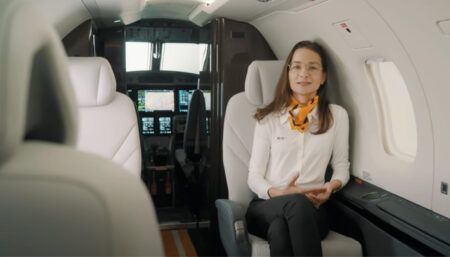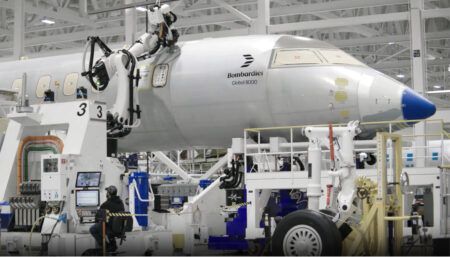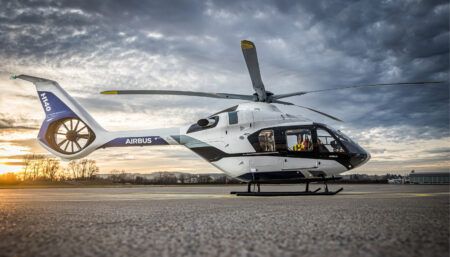The developers of the AS2 supersonic business jet – Aerion and its partners – have wrapped up the conceptual design phase and are now in the preliminary design phase, which should be completed in June 2020.
“We’re on track to fly in 2023, and, before that year is out, cross the Atlantic at supersonic speed, which will be the first supersonic crossing since the Concorde’s retirement 20 years earlier,” said Tom Vice, CEO at Aerion.
“Aerion and our AS2 industry team, comprising Lockheed Martin, GE Aviation and Honeywell, have solved many of the tremendous challenges in creating a supersonic renaissance. We’ve overcome some huge technical hurdles and we’re confident we’ll meet Stage 5 take-off and landing noise requirements.
“We’ve made strides in structures and systems. We’re recruiting top-tier suppliers. And we’re attracting the best and brightest engineering talent to the program as we grow our organization.”
Vice looked beyond the AS2 to subsequent technologies and aircraft that could deliver the promise of a revolution in global mobility, which is Aerion’s mission. “The AS2 is the first step on a roadmap to making supersonic travel efficient, sustainable and widely available,” Vice said.
“Today we are at the limits of available technology. We are starting with a business jet because the technology closes and the business case closes – we see a viable market for the AS2. It will be our springboard to larger and faster designs, both for business aviation and commercial airliners.
“Today we are adapting off-the-shelf engine core technology, which in itself is no easy task. For the supersonic industry to progress we need to demonstrate the market and spur the development of new engine technologies that will meet evolving regulations for noise and emissions, while boosting speed.
“A next generation beyond the AS2, based on further adaptation of current engine technology, could take us from the AS2’s speed of Mach 1.4 to Mach 1.6, and could serve as a larger cabin, longer-range business jet and small airliner. Entirely new engine designs hold the potential to build larger aircraft able to fly at Mach 1.8 and above.
“This evolution will require considerable investment in new technology and will arrive in stages over the next several decades, and Aerion intends to be at the forefront of these developments. If hypersonic passenger planes are flying at some point beyond that, we expect they will say Aerion on the side.”
Aerion entered collaborative agreements with GE Aviation and Lockheed Martin in 2017. The three companies, joined in 2018 by Honeywell for advanced cockpit systems, are developing the Mach 1.4 AS2.
This 12-passenger jet could save travelers as much as three hours across the Atlantic and five hours across the Pacific. Aerion plans to fly the AS2 in 2023, with certification in 2025.





